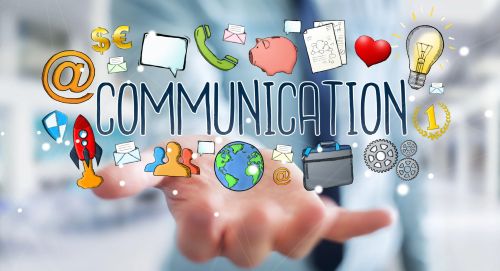

Effective internal communication is the backbone of any successful organization. When employees are informed, engaged, and aligned with company goals, productivity and morale increase significantly. However, traditional communication methods like emails and bulletin boards often fail to keep up with the fast-paced, dynamic nature of modern workplaces. Companies are turning to innovative digital solutions that streamline communication and enhance employee engagement to bridge this gap.
The Challenges of Internal Communication
Many organizations struggle with internal communication due to:
- Information Overload: Employees receive too many emails and messages, making it difficult to filter important information.
- Dispersed Workforces: Remote work and global teams make it harder to ensure consistent messaging.
- Lack of Engagement: One-way communication leads to disengaged employees who feel that their voices aren’t heard.
- Inefficient Channels: Relying on outdated systems can slow down communication and cause misunderstandings.
These challenges highlight the need for modern communication tools that can effectively connect employees, regardless of their location or role.
Modern Solutions for Internal Communication
To improve internal communication, businesses are leveraging various digital tools that enhance connectivity and engagement.
1. Mobile Communication Apps
With the rise of remote work and mobile-first workplaces, mobile apps are becoming essential for internal communication. They provide real-time messaging, instant notifications, and easy access to company updates. Poppulo’s employee engagement app is a prime example, offering an interactive and user-friendly platform that keeps employees connected and informed.
2. Employee Intranet Platforms
A centralized intranet serves as a hub for company announcements, documents, and resources. Modern intranets integrate with collaboration tools, making it easier for employees to access important information and engage with their colleagues.
3. Collaboration and Chat Tools
Platforms like Slack, Microsoft Teams, and Google Chat facilitate quick and efficient communication. These tools allow teams to collaborate in real time, reducing the reliance on lengthy email threads and improving response times.
4. Video and Virtual Meeting Solutions
Face-to-face communication remains crucial for fostering relationships and ensuring clarity. Video conferencing tools like Zoom and Microsoft Teams make virtual meetings more interactive and effective, bridging the gap between remote and in-office employees.
5. Employee Feedback and Survey Tools
Open communication isn’t just about broadcasting information—it’s also about listening. Employee feedback platforms like Pulse Surveys and anonymous suggestion tools allow organizations to gauge employee sentiment and make data-driven improvements.
Best Practices for Implementing Modern Communication Tools
While technology can greatly enhance internal communication, it must be implemented strategically to be effective. Here are some best practices:
- Choose the Right Tools: Assess your company’s specific communication needs before investing in new solutions.
- Encourage Adoption: Provide training and resources to help employees integrate new tools into their daily workflows.
- Promote Two-Way Communication: Encourage employee feedback and open discussions to foster a more inclusive workplace culture.
- Measure Effectiveness: Use analytics to track engagement and adjust communication strategies accordingly.
Conclusion
Improving internal communication is essential for a productive and engaged workforce. Businesses can create a more connected and efficient work environment by embracing modern solutions like mobile apps, intranet platforms, and collaboration tools. Investing in the right technologies and fostering a culture of open communication will ultimately lead to better teamwork, higher morale, and greater organizational success.


